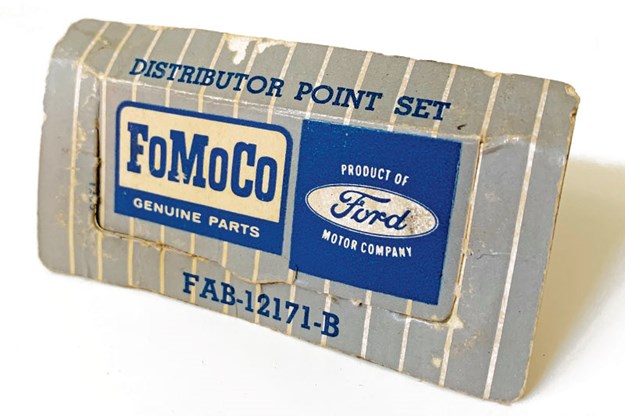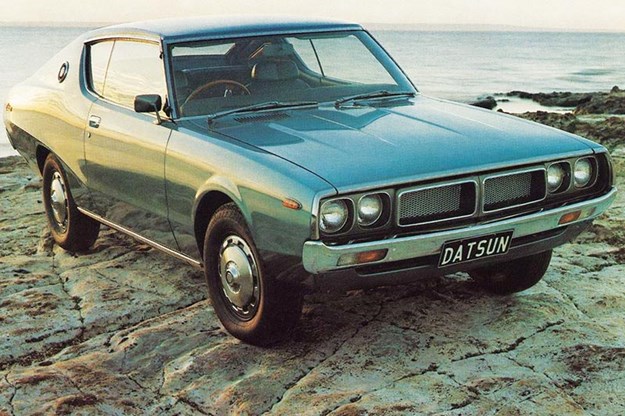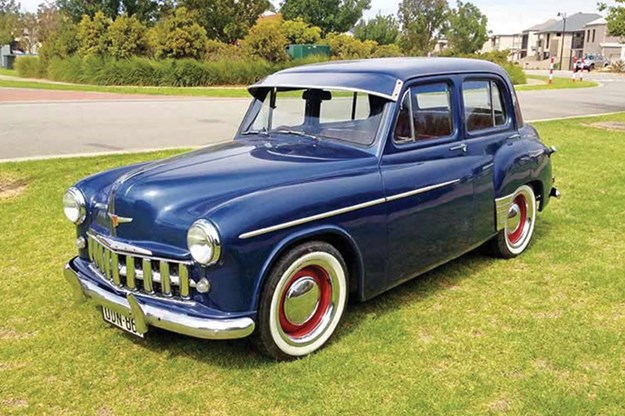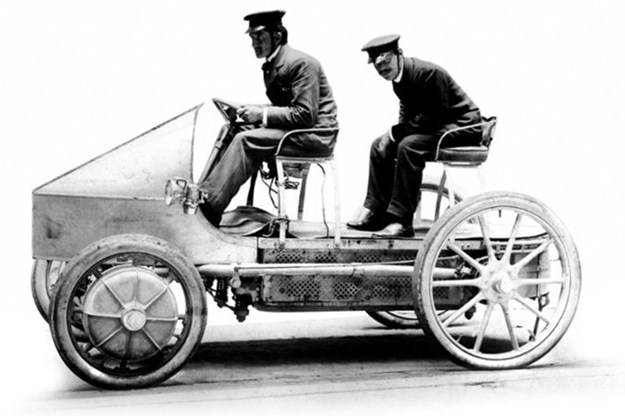HG Monaro project, 240K Dato, XD woes - Mick's Workshop 450



|
Big V8s, the Minx that came to dinner, XD project woes and much more!
You may recall we’ve been doing a big build for Tom Georgas and his family HG Monaro. When I say big, we’re talking new suspension and driveline, and that’s after he got the body completely stripped and refurbished.
Rather than go the factory resto route, he’s doing what he and his brother (who has sadly passed on) always wanted to, which is build it up into quick one-off muscle car. And it’s well on the way.
The front end is by McDonald Brothers – young Ray helped me with that. It’s changed the steering from the standard steering box to a rack and pinion, using a rack adapted from a Subaru. It will steer like a modern car and will have power assist.
Meanwhile we’ve gone for A-arms and coil-overs using Viking shockers for the front suspension. It’s adjustable and, once you find the setting that works best, will be a set and forget. The rear has a complimentary set-up, again using Viking shockers but with leaf springs.
That’s backed up by a set of Wilwood disc brakes up front.
The diff is a nine-inch, set up by Charlie Gauci. It’s an LSD with 31 spline axles – over-engineered, but we’re putting a fair few horsepower through it.
There’s a hand-polished transmission ready to go in, and it is – like a lot of the components in this car – a real shame to hide it away! It’s a three-speed TH350 with a stage two kit in it.
As for the engine, it started life as a 400 and is taken out to 427. I have to confess I misread the clearances on a couple of cylinders and have had to go back in and re-do it. You see the old proverb was right: Measure twice and cut once. Anyway, it’s all good now. It’s the type of thing that happens when you’re playing with bore and stroke and different camshafts.
There is some premium gear in this V8 and it will probably make a comfortable 500 horses. You can get more out of them, but really that’s a lot for what is a fairly light car.
One of things we’ve yet to decide is which way to go with carburetion: a pair of 40mm Dellortos is an option, or we could go for a more traditional single Holley.
Tom has just got his instrument cluster and a host of other trim pieces back from Mark Goode. It’s an amazing job and looks factory-fresh or better. Mark takes his time with this stuff and it’s well worth the wait. It just shows that if you have the hours and resources, almost anything can be brought back to life.
Weirdly, one of our biggest issues when chasing parts is the tyres. Tom bought two sets of wheels for this thing before we even started on it. He’s decided to go with a nice set of period-look 15-inchers, which will be fitted with BF Goodrich T/A radials. That’s a very popular choice for this style of car.
We ordered the tyres when we tubbed the car, then Covid struck. That means the stocks have dried up, shipping replacements is now slower than before and we could easily be waiting until April (or longer) before they arrive!
Then there are the silly things that catch you out, such as one bracket that was missed when we got the chrome plating done.
All up, there is still a lot to do, but we’re getting to that stage where things will happen really fast, as assembly from here should be fairly straight-forward. Watch this space…
Here's my tip:
Here's the point

Mention of ballast resistors reminded me of a pet hobby horse. That is, if you’re going to treat the old jalopy to a fresh set of points (yes, they’re still out there!) go the whole way. Look at the freshening up distributor cap, the leads and the ballast resistor. It’s not going to cost a fortune – no more than a tow truck if its breaks down!
LETTERS:
Special K

Don't let the plain cover fool you. This Dato was fast
Love your magazine. My second car as a young guy in 1974 was a brand new metallic bronze Datsun 240K GL, five-speed manual with a six-cylinder engine. It had all the bells and whistles at the time and was the two-door coupe version.
I think I paid around $3500 for it, which was a bit of cash back then. It had all the gauges spread across the instrument cluster and I can remember the wooden steering wheel.
They also brought in a four-door model.
They were a bit polarising in shape even back then, but I must be drawn to polarising vehicles as I recently had a Chrysler 300 SRT.
You do not see the Datsun 240K on the roads anymore and very few are advertised. I have not read any article(s) on them for a long, long time and they never appear on any lists of classic cars.
What are your thoughts on this vehicle?
Garry Moloney
A MAN after my own heart. The 240K – particularly the coupe – was a stunner of a series and really stood out when it was new. They were a pretty capable thing and those six-cylinder engines are legendary. They’re as tough as old boots with the potential to get a lot of extra performance out of them.
I also seem to remember seeing the four-door sedans being used as taxis in Japan, back in the day.
Your three biggest problems with finding a good one are rust, rust and rust. Mechanicals are easy and any minor trim you can’t find can probably be made.
Gremlins

Delivery from a Mr Reg Ansett of ANA fame
I read Jon Faine’s story about tricky fuses and electrical gremlins and it reminded me of a great mate who is sadly departed.
Pete owned a race engine builder/car resto company and built a lot of great cars for himself and customers.
One of his own cars was a 1955 Dodge Kingsway ute with a nice 360 Chrysler small block.
Anyway, one day he lines up cousin ‘Glove’ (I never found out how he scored the name) in his then current VY/VZ SS ute and gets beaten. This isn’t right, thinks Pete, who checks everything possible to the point of pulling the motor out to find where all the power went.
While the motor is out it gets a new cam, heads etc. Again he lines up cousin Glove and it’s pretty even.
Again the long-suffering Dodge is pretty well pulled apart and more work done on the motor. Still can’t find the problem. Now it’s taken out to 408 cubes, massive cam, valves etc.
Next run, he just beats cousin Glove.
A while later the Dodge won’t start, so checking it all again, he found the ballast resistor is cracked. Of course he had one lying around in the workshop – go figure – so fits it and fires up the Dodge and it sounds really crisp. Takes it out and it lights up the street! It ran 11.2 on street tyres next time out. And he dusted cousin Glove.
Pete also owned an old ski boat fitted with a modified LS5 454, which did 110mph on the water. It was an animal.
One day he wanders into the shed and smells petrol. His investigation finds a split fuel line in the boat. No problem, but while mopping up the fuel he notices one of the horizontal spas in the hull has a small crack. Not ideal in a 110mph boat.
So, he rings the boat repair company, which says no worries they can fix it but he has to take the motor out.
No worries, he builds engines for a living. So tows the boat to the workshop, unbolts the motor and starts lifting it out.
Just when the motor is clear of the edge of the boat, the chain snaps! Sending god knows how many hundred kilos of big block Chev crashing back into the bottom of the boat. It took out the rear seat, spoiler and half the bottom of the boat.
He got it all fixed, but that was one crappy day!
Colin Francis
GEE, POOR old Pete. I can sympathise, as it’s often the simple and inexpensive components that trip you up. The ballast resistor is a great example, as it’s a $20 part on good day.
And what’s a length of chain worth? Not much compared to the cost of a rebuilt hull. Some days it seems like it would have been smart to stay in bed.
Oh, and it’s a long time since I heard anyone mention a Dodge Kingsway. They were a handsome old thing and I reckon the utes looked better than the sedans.
Hello Clio

Scaffolding and harnesses. Must be fast then..
Hi, I’m nearing the mid build of a Renault Clio R3 inspired road legal track car. All the mechanical work is 99 per cent done and it’s had thousands spent on it.
The platform is a Clio 197 Sport. It’s going to paint next week and then gets a fully functional roof scoop, then R3 decals.

The car is looking amazing and may be of interest once it’s finished.
Chris Short
GIVEN YOU’RE in the UK, we’re going to need to act as photographer for us, and we’d love to do a story.
Building a track car that can be driven on the road is always going to be a compromise, but there’s no question you can develop a pretty exciting ride.
Those compromises are going to be felt most when it comes to the chassis, particularly for suspension and brakes.
Something to keep in mind is that race administrators are increasingly demanding the use of a Hans device, and that’s gradually filtering down to even fairly humble classes. So you might want to at least allow for that possibility while you’re in the build.
My other hot tip for the day is ensure your race numbers are removable for the road. Leaving them on is cop bait.
You certainly picked the right car to start with. A Clio Sport doesn’t have to cost a fortune and they’re already well on the way to being a pretty capable track car in standard trim.
You Again!

Back in 2015 you did a Reader Resto story on my 1952 Hillman Minx. Not long after, life made a detour for me and I had to sell it.
Well, after five years passing I have bought it back. Sad to say it’s become a rescue mission it as it is not in good health at the moment.

A re-resto of a Hillman Minx is to begin
I thought you might want to do a story on it returning and how it is looking now and then maybe one when I finish it again possibly taking it to another level. Let me know what you think.
Here is the story you did back in 2015
Steve Guarino
WOW. YOU and that car clearly have a strong connection. And I have to say it’s going to be an unusual experience, going over the trail of your old resto to bring it all back to life again. Keep us in the loop on this one and let us know when it’s done – there’s definitely a story to be told.
And a quick note to anyone out there who’s doing a build, or has recently finished one: drop us a line as the Editor is always on the lookout for build and resto stories. Email us at uniquecars@primecreative.com.au.
Project Trouble

The XD was a new era at Ford
Help! I’m getting to the end of my tether. I’ve taken over a mate’s project car, which started out as an XD Fairmont six. It’s had a 5.8 V8 dropped in, new auto trans with a host of modifications, bigger brakes that look good, wheels – you name it.
A lot of money has been thrown at this thing over time and the work has been done by different people (including my mate) over several years.
The problem is it just isn’t running right, despite all the money and work that has been thrown at it. I’m even seeing an oil leak under the engine (not sure where from, yet) and am starting to wonder where do I start in sorting it out. Any ideas?
John Stringer
I HAVE AN LC Torana in here at the moment with similar issues, John. Someone has stuck in a 5.0lt V8 with VN heads, which is fine. But everyone seems to have had a crack at this thing.
There are issues with the fuel system, a lack of vacuum, pedals going to the floor, the stall converter is only working intermittently, then there are the oil leaks!
I reckon there are two problems here: the first is every genius and their dog has had a go at it, and this is the result.
The second problem? It’s happened over a long period, so some things that were done ages ago are starting to wear out or are simply out of date.
In this case what we’re going to have to do is weigh up what needs to be done and then work out with the owner how or if he wants to tackle it. I’ve already given him a scare and we’ll talk it over once I’ve had a chance to assess it properly.
My approach will be: This is what we need to do, or it’s not going to work.
So, just as a bit of general advice, by far the best approach to a project car is plan what needs to be done and wait till you’ve got the funds and the people lined up to do it as a whole. In general you want someone project-managing it from start to finish, so there is a coherent approach. And, in the case of the driveline, someone who knows what they’re doing, so you are actually using components that will work together.
In your case, John, I’d suggest doing exactly what I’m up to with the LC. Sit down, work out the list of what needs to be done from front to back (no matter how ugly that may be) and then nut out what you do from there. Good luck with it.
TRIVIAL PURSUIT
Electric Blues

While hybrid cars seem like the latest thing, they’ve been around for 120-ish years. Ferdinand Porsche (yes, that Porsche) developed a hybrid for the Lohner Works, which saw potential in an electric carriage. A couple of versions were developed, with the ‘Mk 2’ spec sounding uncannily familiar: electric motors in all four wheel hubs, powered by batteries, backed up by a gasoline-engine generator. Known as the Lohner Porsche, production is thought to have lasted from 1900 to 1905.
From Unique Cars #450, March 2021
Unique Cars magazine Value Guides
Sell your car for free right here
Get your monthly fix of news, reviews and stories on the greatest cars and minds in the automotive world.
Subscribe

.jpg)










